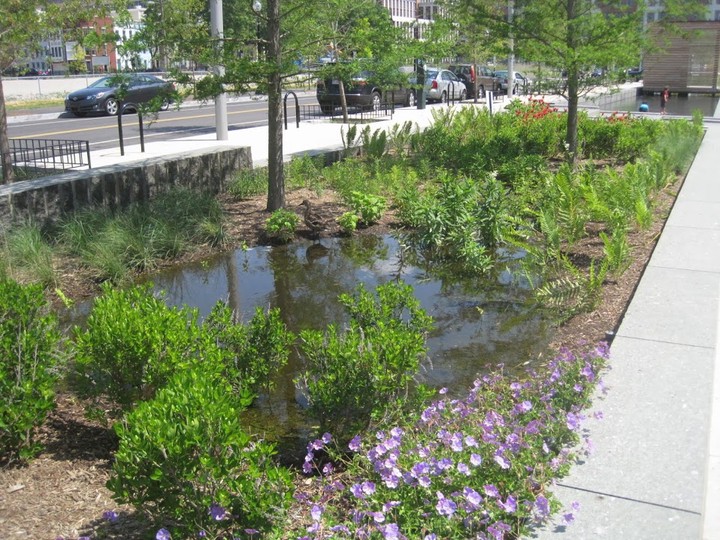Evaluating Multiple Benefits of Urban Rainwater Catchment Systems in Austin, Texas
 Image credit: Unsplash
Image credit: Unsplash
Abstract
Over the next century, climate change adaptation measures will require significant investment in building, improving, and changing urban water infrastructure. These measures will require multifaceted strategies that can simultaneously address many challenges, such as flooding, impaired water quality, and lowered efficiency. These strategies will also provide key co-benefits, such as energy savings and lowering greenhouse gas emissions. To meet the need for a standardized approach to quantifying these co-benefits, the Pacific Institute developed the Multi-Benefit Framework (MBF). As part of its efforts to improve urban hydrology in Austin, Texas, the city’s Watershed Protection Department (WPD) installed rain cisterns and rain gardens on twenty-five homeowners’ properties within its upper Waller Watershed in 2017. Austin WPD’s Rain Catcher Pilot Program (RCPP) aimed to improve watershed health, reduce flooding, and augment local water supplies within the greater Austin area. This project used the Pacific Institute’s MBF to quantify co-benefits that will occur when RCPP is scaled up to 1200 homes in 2022. Co-benefits include urban heat island temperature reductions, energy savings, and improved health and equity outcomes within the Waller-3 project area. We have (a) quantified energy savings from improved water conveyance and urban heat island temperature reductions, (b) identified and evaluated opportunities for incorporating equity into the RCPP, and (c) compiled useful resources for decision-makers who plan to employ the framework in evaluating future water projects.